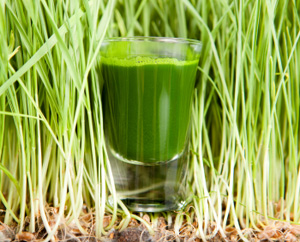Gluten Free
What does following a gluten-free diet mean? That you're embarking on an easy diet with a wide range of health-promoting effects. Instead of dwelling on what you’re giving up, consider that you’re going to enjoy a whole new world of delicious food options to meet your special dietary needs. You’ll be eating seasonally, choosing more fresh fruits and vegetables, focusing on meats, seafood, poultry, legumes, lentils, corn, and rice, and discovering fascinating ancient grains such as quinoa, amaranth, and millet. You’ll be able to eat potatoes, eggs, most cheeses, even chocolate (!)—and enjoy them without guilt because you’ll be taking good care of your body. In fact, you’ll probably end up eating—and feeling—better than ever!
Visit this page for more information about living Gluten Free
---
We carry a large variety of gluten free items, the brands listed below represent just some of the offerings we carry















More Diets

Related Topics
- By Jane Lininger, DC
Drink to Your Health with Raw Green Smoothies
We all know that we should eat more leafy greens, right? But why? Leafy greens are vitamin- and mineral-dense, do not contain much starch, and have great fiber. Leafy green vegetables are rich in many nutrients, including vitamin A, vitamin C, folic acid, vitamin K, iron, and calcium. But many of us don’t like greens enough to prepare, season, and cook them regularly. And to really reap the health benefits, we need to eat them daily. So what is a health-conscious person to do?
Leafy green vegetables are rich in many nutrients
Drink Your Greens!
In her book, Green Smoothie Revolution (North Atlantic Books, 2010), Victoria Boutenko describes her journey to an all-raw diet, and how in the process she discovered deliciously palatable smoothies made from lots of leafy greens. Of Boutenko’s many wise suggestions, I especially like her recommendation to make smoothies delicious so that you will continue to drink them daily. Boutenko loves leafy greens because they are so nutrient-dense and have little starch compared with other vegetables.
Long-Term Tips
Here are a few tips for getting the best benefits from your smoothie:
- To expose your body to a greater variety of nutrients and to avoid developing any intolerances, rotate your greens every week.
- If reducing toxins matters to you, whenever possible use organic produce.
- Drink them by themselves for the first meal of the day so that they can be easily digested.
- When you drink, drink slowly, mixing each sip with saliva.
Jane’s Great Green Breakfast Smoothie
Here is my own recipe. I use a high-performance blender, blending on “High” for 1½ to 2 minutes to achieve a smooth texture.
Ingredients
- 2 cups filtered water
- 6 to 10 leaves lacinato kale
- 1 large handful spinach
- 1 apple
- 1 banana
- ½ to 1 peeled lime
- 1 to 4 pitted dates
- A few drops stevia (a natural sweetener)
- 1 cup berries (blueberries, raspberries, strawberries)
- 1 inch piece of fresh ginger root (optional)
This makes about 45 to 50 ounces.
Tip: I vary the types of kale and even have tried turnip greens—though those were quite strong! I sometimes put in a pear instead of an apple, and often omit the banana. You can also experiment with adding other healthy ingredients such as coconut oil, avocado, ground flax seeds, or chia seeds.











